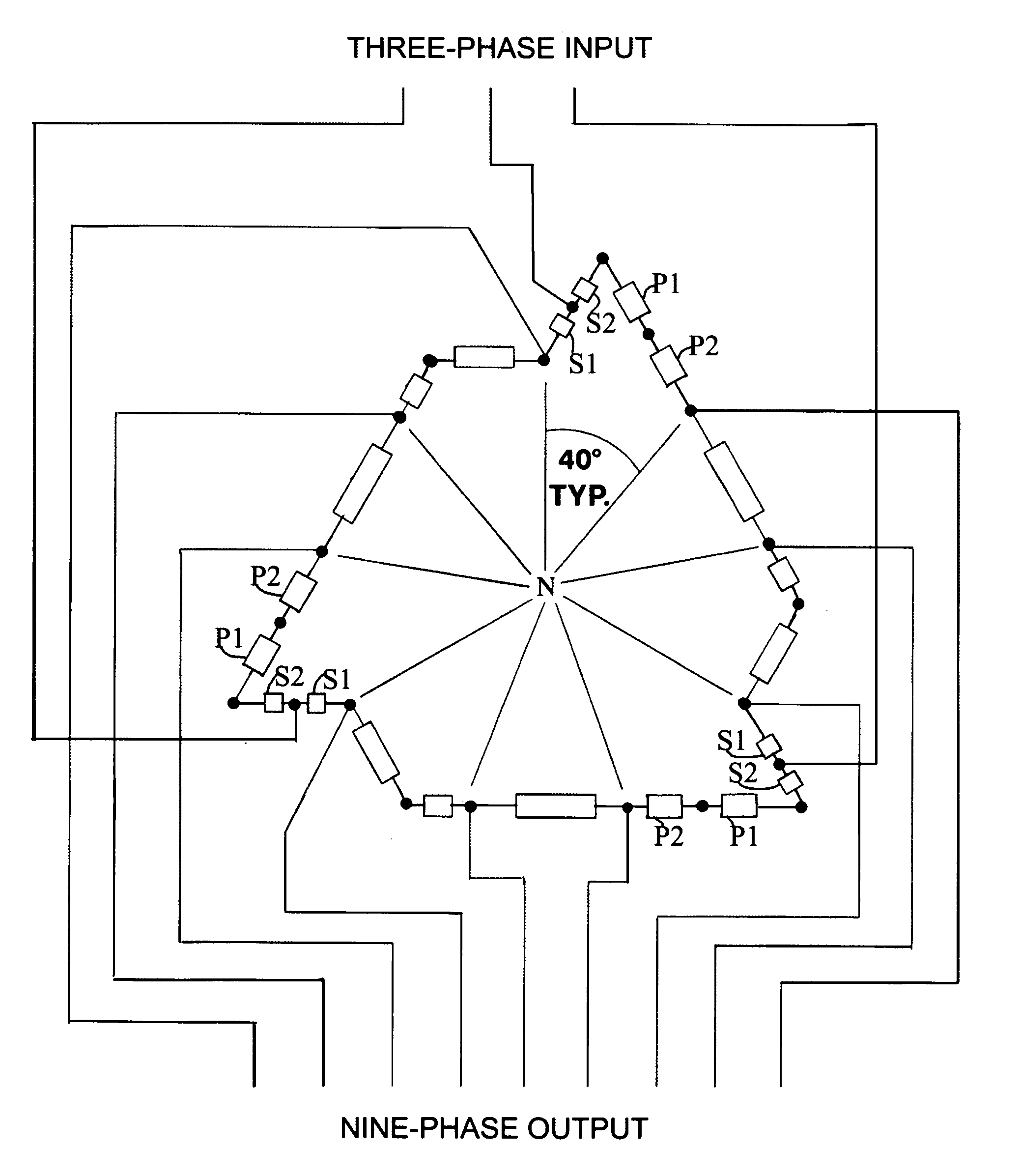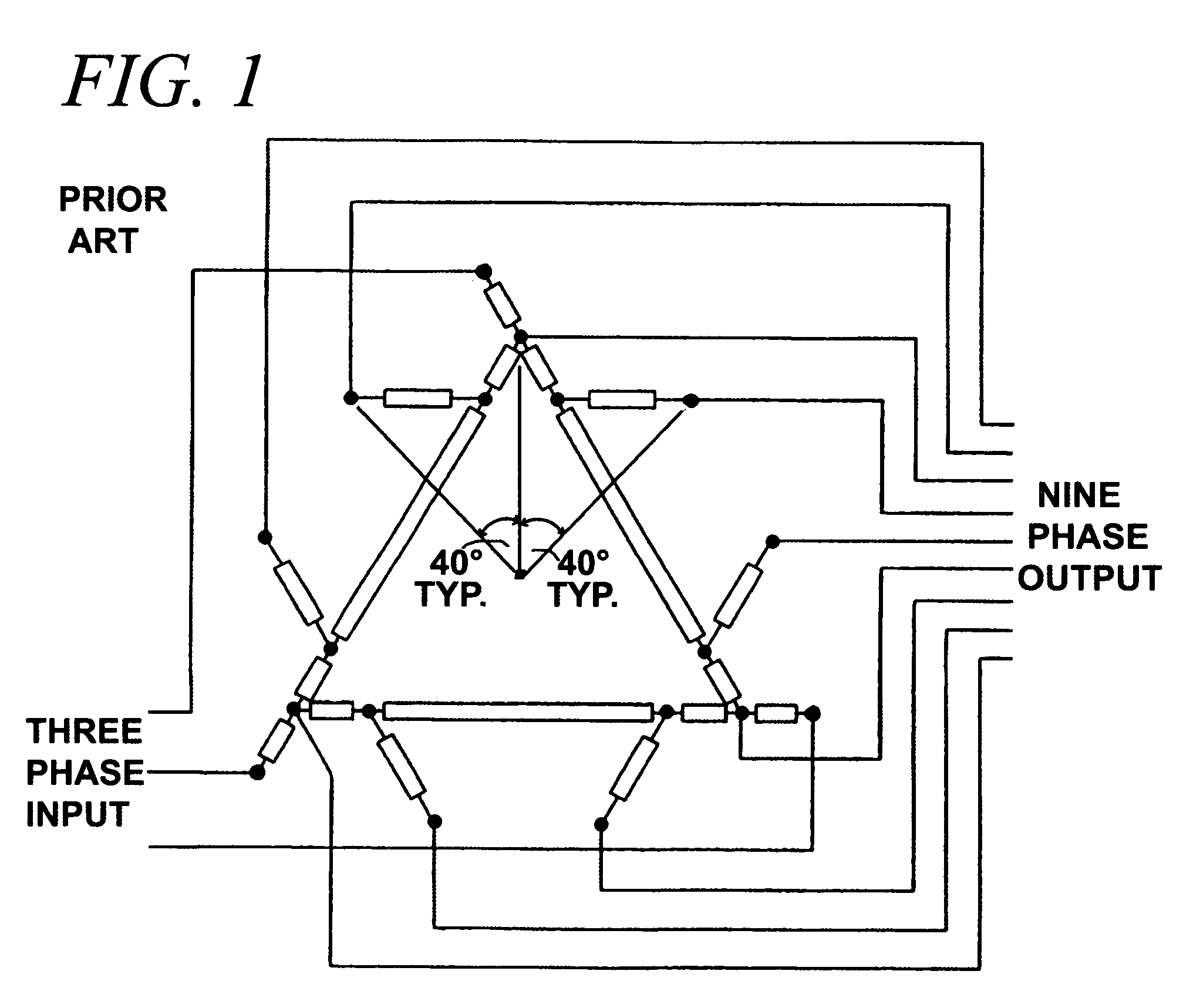Nine-phase step-up/step-down autotransformer
a technology of step-up and step-down, which is applied in the direction of ac-ac conversion, fixed transformers, power conversion systems, etc., can solve the problem of significant increase in the kva rating of transformers, and achieve the effect of convenient manufacture and useful practical simplification
- Summary
- Abstract
- Description
- Claims
- Application Information
AI Technical Summary
Benefits of technology
Problems solved by technology
Method used
Image
Examples
Embodiment Construction
[0023]The essence of the invention lies in the relative number of turns on each winding and the interconnections. By these means, circulating third harmonic currents caused by a nonlinear load, such as a nine-phase bridge converter, are reduced to a value that has tolerable effect on the winding current rating. The circulating current is much less than exists in a nine-phase polygon connection, such as described in U.S. Pat. No. 6,335,872, thus the kVA rating of the nonagon and dodecagon autotransformers taught by this invention is substantially smaller. Also, unlike the teachings of U.S. Pat. Nos. 5,124,904 and 5,619,407, stub windings are not required. By eliminating stub windings the polygon windings carry both load and circulating third harmonic currents. This results in good utilization of the copper or aluminum conductors used in the windings.
[0024]Referring to FIG. 5, apexes of the nonagon are labeled D, E, and F. A three phase supply is connected to terminals A, B, and C. A ...
PUM
 Login to View More
Login to View More Abstract
Description
Claims
Application Information
 Login to View More
Login to View More - R&D
- Intellectual Property
- Life Sciences
- Materials
- Tech Scout
- Unparalleled Data Quality
- Higher Quality Content
- 60% Fewer Hallucinations
Browse by: Latest US Patents, China's latest patents, Technical Efficacy Thesaurus, Application Domain, Technology Topic, Popular Technical Reports.
© 2025 PatSnap. All rights reserved.Legal|Privacy policy|Modern Slavery Act Transparency Statement|Sitemap|About US| Contact US: help@patsnap.com



